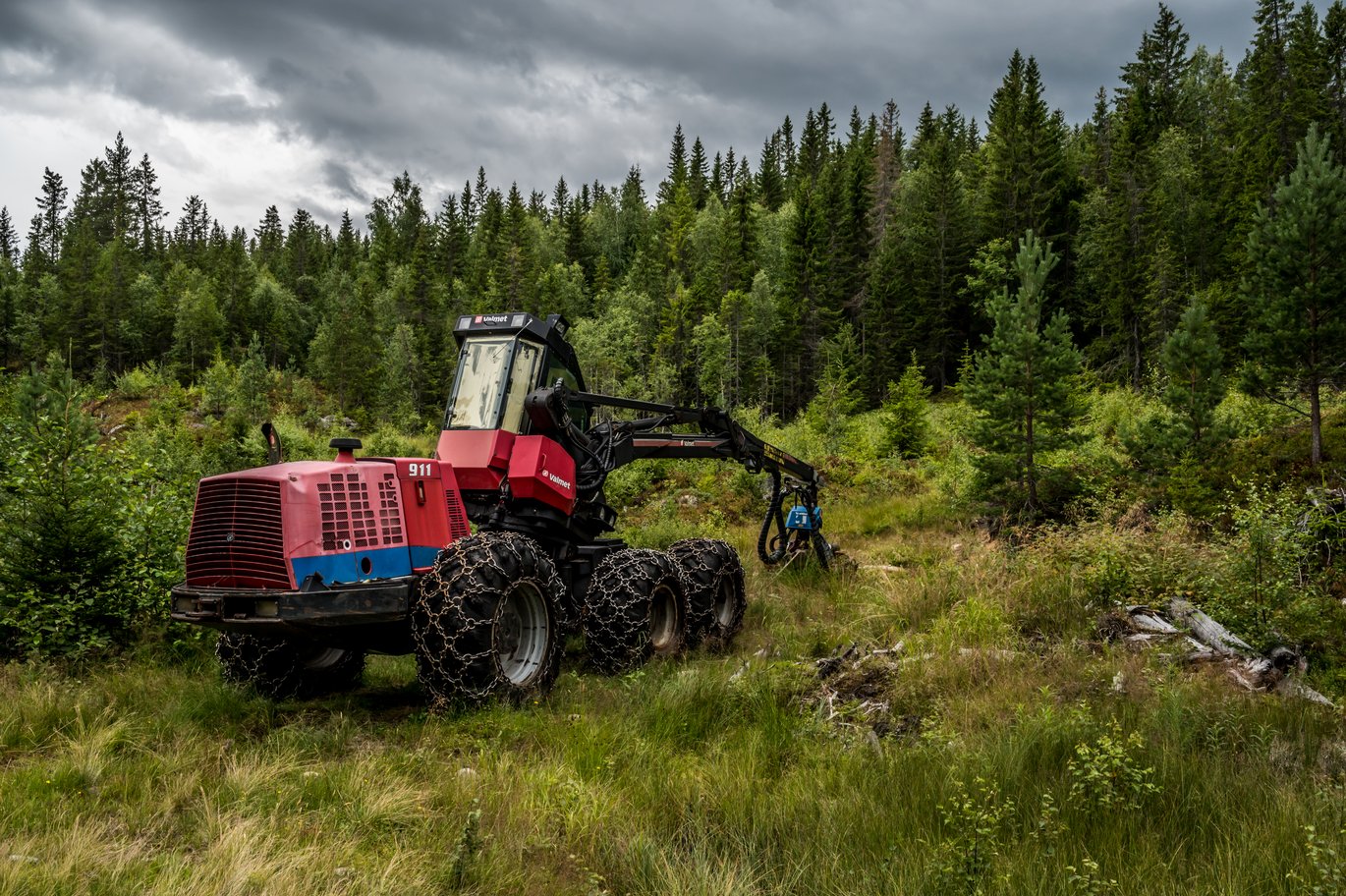In the deep silence of the forest - a hidden issue threatens the soil beneath the trees
A global meta-analysis investigating the susceptibility of forest soils to machinery-induced compaction has unveiled a quiet battle in the world of forestry, where heavy machines may contribute to the degradation of forest soils and hinder tree growth. Researchers from Aarhus University, among others, have identified regions worldwide where forest soils are most vulnerable to the impacts of heavy machinery.

Covering 30% of the Earth's surface, forests play a crucial role in the planet's ecosystem and biodiversity conservation. However, recent research indicates that forests are also susceptible to soil degradation.
"Forests are frequently used for harvesting wood, but the machines that are used for efficient forest management also pose a threat to the health of the forest soil and with that also a threat to wood production and biodiversity," says Postdoc Meisam Nazari from the Department of Agroecology at Aarhus University.
Indispensable machines
Today, the use of heavy forestry machinery is indispensable for economically efficient forest management. However, according to researchers, the necessity of machines can lead to soil compaction in the forest.
"We are familiar with the compaction of agricultural soil; there is a wealth of studies on that topic. Similarly, like agricultural soil, the soil in our forests can also become compacted," explains Meisam Nazari. When the soil is compacted, water and oxygen supply are reduced, resulting in decreased tree growth and disturbed delivery of forest ecosystem services—a concerning development for both forestry practices and biodiversity.
"There is a significant difference between forest soil and agricultural soil. When agricultural soil is compacted, there are several methods available to loosen it, such as tilling or using plants with deep penetrating roots. However, once the soil in our forests is compacted, there is not much we can do to improve the status. This means that such compaction and its negative effects can last for decades," he adds.
Once the damage is done, it is nearly impossible to rectify. Therefore, predicting and preventing compaction is crucial.
Global overview
Meisam Nazari participated in analysing data from 81 forest areas worldwide to assess the vulnerability of forest soils to compaction.
"We could clearly see that forest soils in tropical and temperate regions are most susceptible to compaction. This does not mean that forests in colder and arid regions are not susceptible at all, but in tropical and temperate parts of the world, there is more rain. This results in greater tree growth producing more leaves and root exudates, leading to more organic material in the soil. More rain and organic material make the soil wetter and looser and more susceptible to machinery-induced compaction," explains Meisam Nazari.
If we are to preserve the health of the forests, predicting where they are most vulnerable is crucial to prevent compaction as much as possible. So, we have created a global map showing the susceptibility of the different regions. (You can find the map in the scientific publication here)
Can soil compaction be avoided?
Regardless of the part of the world where forestry is practiced, it is essential to take measures to avoid compacting the forest soil.
"It is actually quite simple to minimise forest soil compaction," says Meisam Nazari. "One just needs to measure the soil's moisture and avoid operating machinery during wet conditions. Instead, plan forestry activities during dry periods or periods with minimal soil moisture."
However, the challenge lies in forestry practices in northern regions, where deciduous trees shed their leaves. This process occurs during autumn and winter, the months when the soil is often very wet.
"When trees shed their leaves, they also do not absorb water from the soil. The trees felled during leafless months are drier, which is advantageous for the wood industry as it reduces the energy and time required for drying the wood," he explains.
According to Meisam Nazari, a balance must be found to cater to both the tree's and the soil's moisture. This is the next step for the researcher and his colleagues, who are already working on finding the golden middle ground.
| ITEM | CONTENT AND PURPOSE |
|---|---|
| External collaborators | Department of Agroecology at Aarhus University, Agroscope, Swedish University of Agricultural Sciences, Geo-Biosphere Interactions, and Graz University of Technology. |
| External funding | The research is funded by the Independent Research Fund Denmark under the Sapere Aude research leadership project: Restoration of ecosystem services after soil compaction caused by cross-country traffic in Europe (grant number 1051-00021B). |
| Conflict of interest | The researchers declare no conflict of interest |
| Link to the scientific article | The publication "A meta-analysis of soil susceptibility to machinery-induced compaction in forest ecosystems across global climatic zones" is published in the journal Current Forestry Reports. It is authored by Meisam Nazari, Emmanuel Arthur, Mathieu Lamandé, Thomas Keller, Nataliya Bilyera, and Samuel Bickel |
| Contact information | Contact: Postdoc Meisam Nazari, Department of Agroecology, Aarhus University. Email: meisam.nazari@agro.au.dk |
